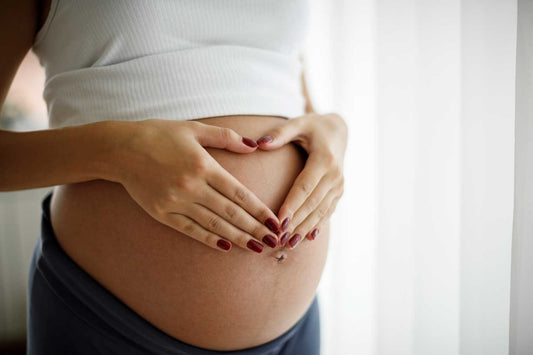WHAT IS A C-SECTION?
A C-section is one of the ways of delivering a baby by doing surgery that opens up the mother’s abdomen and uterus. It’s also known as caesarean birth. Though many women have to go through the same and have to plan a vaginal birth to find that your plan has to change.
Sometimes during the labor or delivery, your doctor might decide that you need this C-section because of the sudden change in your health or of the baby’s health that turns out for the worse and too risky for the vaginal birth.
It is important and necessary to learn about it, in case maybe you need one. In US. 30% of babies are born with a C-section. So, it’s pretty common there. C- section is safe for both mother and the baby but it is a major surgery that you shouldn’t take lightly. A C-section is one of the ways of delivering a baby by doing surgery that opens up the mother’s abdomen and uterus. It’s also known as caesarean birth. Though many women have to go through the same and have to plan a vaginal birth to find that your plan has to change.
Sometimes during the labor or delivery, your doctor might decide that you need this C-section because of the sudden change in your health or of the baby’s health that turns out for the worse and too risky for the vaginal birth.
It is important and necessary to learn about it, in case maybe you need one. In US. 30% of babies are born with a C-section. So, it’s pretty common there. C- section is safe for both mother and the baby but it is a major surgery that you shouldn’t take lightly.
TYPES OF C-SECTIONS
There are several different types:
Planned C-section
If you know before that you will be born via C-section, you’ll know the date and won’t go into labor. Before his procedure that you can receive medical and fluids. You’ll also have a catheter (a thin tube) put into place to keep your bladder empty during the surgery. Women who planned C-sections get local anaesthesia, either an epidural or a spinal block. This will numb you from the waist down, so you won’t feel any pain. This type of anaesthesia lets you know and make be awake and aware of what’s going on. Your doctor may offer you general anesthesia and this will put you to sleep for most planned C-sections. The doctor put a screen in front of you so you won’t be able to see the surgery when it happens. They’ll make one cut in your belly, then another one in your uterus. You won’t feel them because of the anesthesia. But this will make you feel when doctors will pull or push on your middle section to remove a baby from your uterus. You won’t be hurt but feel the pressure only. You should be able to hear and see your baby after your baby is born. The doctor should let you to hold them right after the C-section is finished.
If you’re planning to breastfeed, you may also be able to try feeding your baby. But not all women get to hold the baby exactly after a C-section. Sometimes babies are born by C-section have trouble breathing and need help from the doctors.
Sometimes babies who are born with c-section faced trouble breathing and need help from doctors. If this is the case, then you should be able to hold the baby then the doctor decided that they are healthy and stable or not.
After the birth of the baby, the doctor will remove your placenta and stitch you up. This entire C-section only takes only 45 minutes to an hour.
EMERGENCY C-SECTION
During an emergency C-section, a few things will be different, including the speed and urgency of the surgery. The doctor can deliver your baby about 2 minutes after they make the incision in your uterus. (During a planned C-section, this may take 10 or 15 minutes.)
The speed may be necessary: If your baby is having trouble breathing or their heartbeat isn’t steady, doctors want to get them out of your uterus quickly and into the hospital, where they can get crucial medical help to get them stable.
If you have an emergency C-section, your anaesthesiologists may be able to quickly give you medicine through your epidural to make you numb, so you still may be able to be awake during the procedure. If not, you may get general anesthesia and sleep through the entire surgery. You won’t feel pain or pressure, see or hear your baby being born, or be able to hold your baby right after birth. But when the anesthesia wears off, you should be able to see, hold, and feed your baby.

Why Are C-Sections Performed?
You may plan to have a C-section because of certain health issues with you or your baby:
- If you’ve already had a C-section, you may not be able to deliver your next baby vaginally.
- Mothers can give some infections, like HIV and active herpes, to the baby during vaginal delivery.
- If you have certain conditions, like diabetes or high blood pressure, a C-section may be safer.
- The placenta may be blocking your cervix.
- Multiple births may make a C-section necessary.
- Your baby may be too large or in the wrong position for vaginal delivery.
- Your baby may have birth defects that make a C-section safer.
- You may start out delivering vaginally but switch to a C-section if there are problems.
- Your labor may stop progressing.
- The doctor may notice signs of distress in your baby, like an irregular heartbeat.
- The umbilical cord may get wrapped around the baby, or enter the birth canal before the baby does.
- The placenta may separate from the uterus.
C-Section Risks
A C-section is a common procedure. But as with any surgery, there is a chance something could go wrong. Risks of C-section include:
- Infection
- Heavy bleeding
- Blood clots
- Reaction to anesthesia
- Damage to organs like the bladder or intestines
- Injury to the baby
Having a C-section can damage your uterus and make it more likely you’ll have problems with future pregnancies. But many women go on to have healthy pregnancies and safe vaginal deliveries after a C-section.

What is the procedure for a caesarean section?
At the start of the procedure, the anesthesia will be administered, and a screen or sterile drape will be used to protect the sterile environment of the incision site. Your abdomen will then be cleaned with an antiseptic, and you might have an oxygen mask placed over your mouth and nose to increase oxygen to the baby.
The doctor will then make an incision through your skin and into the wall of the abdomen. The doctor might use either a vertical or transverse incision. (A horizontal incision is also called bikini incision, because it is placed beneath the belly button.) Next, a 3- to 4-inch incision is then made in the wall of the uterus, and the doctor removes the baby through the incisions. The umbilical cord is then cut, the placenta is removed and the incisions are closed.

How long does the caesarean section procedure take?
- The typical C-section takes about 45 minutes. After the baby is delivered, your healthcare provider will stitch up the uterus and close the incision in your abdomen.
- There are different types of emergency situations that can arise during a delivery. In some cases, the caesarean delivery will happen very quickly, with the baby being delivered in as little as 15 to 20 minutes. This is an emergency C-section. Afterwards, there will be additional time when the provider will stitch up the uterus and abdomen.
C-Section Recovery
1.) Get plenty of Rest
2.) Take care of your body
3.) Relieve your pain
4.) Focus on good nutrition





